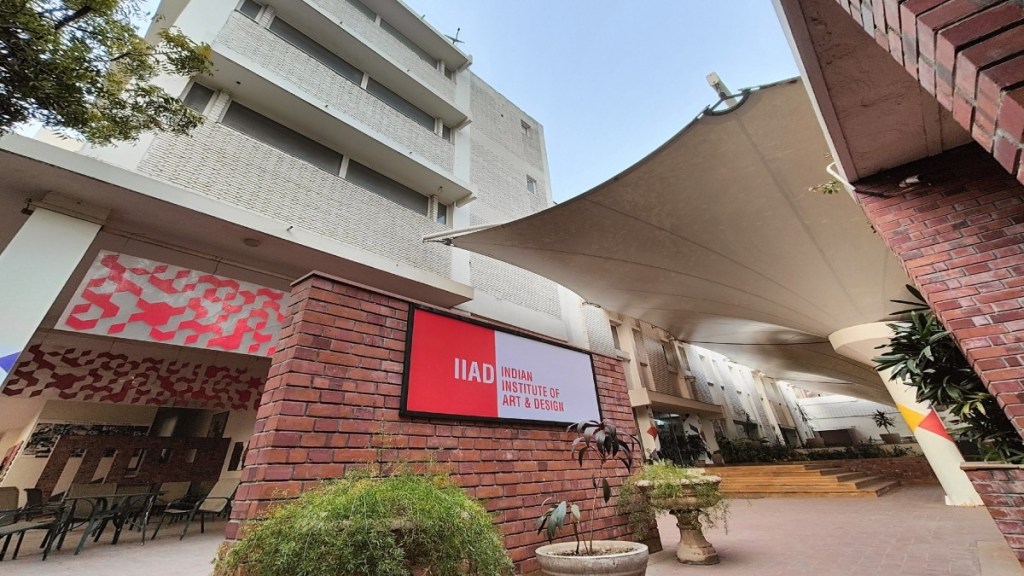The Indian Institute of Art and Design (IIAD), Delhi, claims to provide various undergraduate (UG) and postgraduate (PG) courses in design education. The institute further claims that the curriculum for all its UG and PG courses has been co-developed in partnership with the Kingston School of Arts at Kingston University, London. “At IIAD, we have facilitated numerous academicians and technical experts in sharing their teaching experiences. Our curriculum has been collaboratively developed with Kingston to ensure that we impart design principles which are contextually relevant to India, rather than adhering solely to Western design principles,” Jitin Chadha, founder, CEO, Indian Institute of Art and Design, told FE Education.
As part of its partnership Kingston University, it allows students to opt to split their course of education between India and London. However, opting for London leads to an increase in fee by approximately 50% of the current course. “Students can opt to spend two years here and the remaining two in London,” Chadha added. When asked on the nature of the partnership, the institute declined to comment.
As per the institute the first year of its all UG courses serves as the foundation course where students learn the basic concepts and in the next three years, students opt for specific programmes. “This structure, termed the ‘one plus three system’ is not unique to our institution, as even NIFT and other design schools incorporate a foundation year followed by three years of specialisation, focusing on imparting basic concepts and core design principles,” Chadha added. The institute further claims that its curriculum also includes a 16-week mandatory internship for students in their third year.
According to the institute’s official website, the duration of its UG and PG courses are typcially four years. The institution moreover provides courses in Fashion Design, Communication Design, among others and a PG course in Fashion Business Management. To enrol in these courses, students need to clear the Design Aptitude Test which has been developed by the institute. . “For instance, on average, around 80 students enrol annually in communication design, 60 in fashion design and approximately 30 each, in fashion business management and fashion communication for undergraduate programmes. The postgraduate management programme typically enrols around 20-30 students each year,” Chadha informed.
The institute further claims that for its UG courses, it charges a total fee of Rs 18.98 lakh and for a PG course, it charges Rs 8.26 lakh. When asked, IIAD claims that design education entails higher costs due to smaller class sizes, high faculty-to-student ratios to focus on skilling and the need for extra facilities and equipment. “With a focus on practical, hands-on learning, our students engage in studio-based projects, utilising multiple resources. Additionally, collaborations, faculty training and access to specialised software contribute to the overall cost,” he added.
Furthermore, the institute claims to provide scholarships to around 35% students enrolled in courses. As per the institute, these scholarships may vary between 10- 50% of the fees based on merit. “Merit, in this context, is determined by performance in our design aptitude test, which assesses design capability, not just mathematical skills. The scholarship amount is also influenced by the financial status of the student,” Chadha said.
When it comes to placement, the institute claims that only 50% of its UG students participate in the placements and the rest 50% go for master’s and post graduation opt for their family businesses. Of these 50% students, it claims to have an average placement rate of 90%, while the student recruitment package ranges between Rs 4-12 lakh. For its PG course, it claims to have a placement rate of 80% with salary packages ranging from Rs 6-8 lakh. Furthermore, the institute claims to have industry associations with companies including IBM, ABIBA, Fabindia, LEVI’S, NETFLIX, LOPEZ DESIGN, among others. “These partnerships extend beyond mere hiring collaborations. They involve industry associates participating in various ways, such as contributing to classroom projects, offering internships and engaging in the placement process,” he said.
